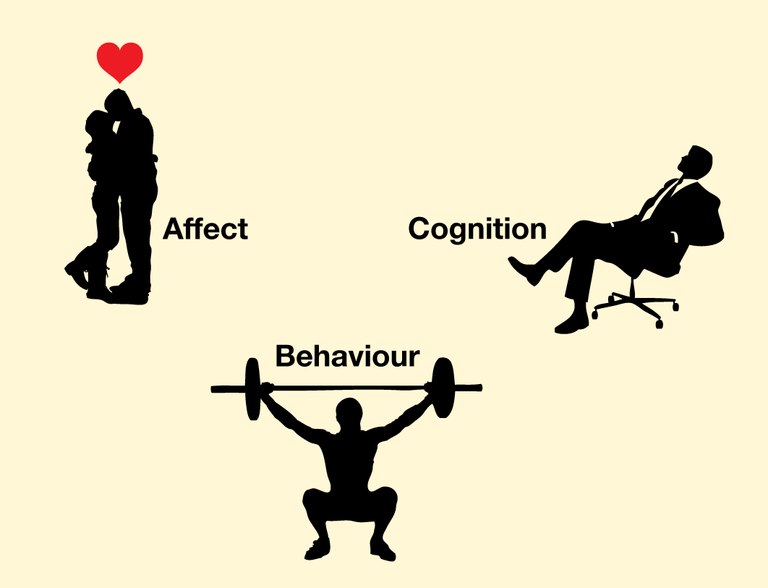This is the third part of article.
Pictures can be found on google.com
Part 1 can be found here: https://steemit.com/aggression/@psychnmore/video-games-nv-influence-on-aggressive-cognition-part-1
Part 2 can be found here: https://steemit.com/life/@psychnmore/video-games-nv-influence-on-aggressive-cognition-part-2
And now Part 3:

7. Routes
Affect
With the theories and the GAM it is clear that input factors influence the decision making process and the resulting behaviour. This happens through routes. Affect is one of these routes and covers moods and emotions. Anderson (1997) found that watching video clips with violent content also increased the hostile feelings in the participants. The same happens when watching violence in a video game, either as spectator or as active aggressor (Valadez and Ferguson, 2012; Anderson and Dill, 2000). Research often only considers violent video games, but with the input factor of frustration and the knowledge that when feeling uncomfortable the hostile feelings rise (Berkowitz 1993), it could mean that non-violent video games also have an effect on mood and emotion towards aggression.
Also part of the affect route are automated muscle responses. Berkowitz (1993) proposed that negative, unwanted experiences directly activate motor responses of the facial muscles towards aggression related expressions and also are more than mere facial expressions.
Cognitive
The research on cognitive routes in which aggression is influenced in humans looks at aggressive and hostile thoughts, and also at scripts or concepts that are connected to aggression. Looking at the work of Huesmann (1998), it delivers an explanation of the background processes that create aggressive scripts that can be accessed anytime needed if the individual enters a situation and interaction possibly regarded as hostile.
The aggressive thoughts are a result of certain inputs that increase the access to concepts associated with aggression from the individuals memories. If those inputs happen more often a pattern is formed that allows easy access to the aggressive thoughts at any time. While a short term activation makes the script also short term accessible (Sedikides and Skowronski, 1990).
The creation of aggressive thoughts and activation of scripts happens also while playing video games. Mainly through the observation of violent acts in the game (Valadez and Ferguson, 2012) or through profanity (Ivory and Kaestle, 2013). But as it is often the case studies on aggression and video games focus on video games with violent content or verbal aggression as content. Considering the input factor of frustration it is possible to create aggressive thoughts without the violent or profane content.
Arousal
Physiological and psychological Arousal can be stimulated by a wide range of situational input factors. For example hot temperatures will increase the heart rate and at the same time will have a decreasing effect on perceived arousal. This could mean the high temperatures have influence on aggression through the arousal route (Anderson et al., 2000). Rotton and Cohn (2004) connected the influence of temperature to criminal assault. The results supported the psychological theories of aggression.
Again when looking towards video games the research has a focus in violent video games as the ambient that could have influence is more prominent and accessible. For example the colour of blood or screams of victims (Jeong, Biocca, and Bohil, 2012). It is study on sensory realism in games and the influence it has on aggression by measuring the physiological arousal (skin conductance levels). The result did not support the influence of arousal on aggression.
8. Hypothesis and predicted results
Under consideration of the psychological theories on aggression and the work of researchers like Jeong, Biocca and Bohil (2012), Anderson et al. (2010), or Ivory and Kaestle (2013) on aggression in violent video games, this study will look at the effect of non-violent video games on aggression by looking at reaction time to words associated with aggression and peace, and the physiological data of the heart rate and breath rate.
The theories and previous research predict that input factors like frustration or a stronger competition take influence on the cognition influencing aggression. That means if there is a change towards aggression the heart beat and breath rate should rise (hypothesis 1) and the reaction time to aggressive associated words will drop more than the reaction time for words associated as peaceful (hypothesis 2). Or that with a rise in aggressive cognition the reaction time to respond to peaceful stimuli could become slower (hypothesis 3).
Also that a change in aggressive cognition will lead to a change in perceiving aggression or peace in others and the self (hypothesis 4).
Leading to the main hypothesis that non-violent video games will have an influence (negative or positive) on aggressive cognition.
Method

1. Participants
Nine students from the University of South Wales participated in the Experiment for the study. Six male and three female participants ranging in age from 18 to 25 years (mean age 21.44 years). Six participants considered themselves as regular players with playing time of 3 to 18 hours a week. Among the most favourite genres of games for the participants were first person shooter and open world games. Every participant took part in all conditions of the experiment. Before the experiment informed consent was obtained from the participants (see appendix 1). Research participation time of 60 minutes was offered as reward for taking part in the experiment. All participants were debriefed after the experiment (see appendix 2).
2. Materials
A windows laptop was used in the experiment, equipped with the Biopac software by Biopac Systems, Inc. and the Biopac system to read and amplify the readings of heartbeat and breath rate. Also the Implicit Association Test (IAT) program (Meade, 2009) was installed on the laptop. The list of words used for the IAT was base on the information in the study by Bluemke and Zumbach in 2007 and can be found in appendix 3.
An Omron digital automatic blood pressure monitor (Model M2 Basic) was used in the experiment.
Furthermore a TV set and a Playstation 2 by Sony were used in the experiment. The non-violent racing game Grand Turismo 3 was used and a short description of the controls used for the game. All participants used the same car for the experiment.
3. Design
For this experimental study a within subjects design was used. All participants were exposed to the same independent variables and were measured by the same dependent variables.
The independent variables for this study were the conditions (baseline, game easy, game hard) and the word types in the Implicit Association Test (IAT).
The dependent variables were the heartbeat, the breath rate, the blood pressure and the reaction time in the IAT.
4. Procedure
The first step for the experiment is to obtain the consent of the participant, after the participant was briefed what he will be doing. Followed by a few general questions that help the study (see appendix 4).
After this is done the participant needs to be connected to the Biopac system with the strap used to read the breath rate and the electrodes for the heartbeat. Once attached to the Biopac system, a calibration and first reading of the heartbeat and breath rate was conducted. Then a first reading of the participants blood pressure was taken with the Omron blood pressure monitor and a first Implicit Association Test (IAT) was completed by the participant. After the data for the baseline was collected the participant was given 5 minutes of training time with the game, to get used to the controls. This happened without active Biopac monitoring, but the participant still attached to the Biopac system. So the participant was able to get used to the cables. The training was followed by a few minutes of calm down time for the participant, if the Biopac readings after the training showed a difference from the baseline reading.
With the participants Biopac readings back to baseline level, the second condition started with simple race track on the game difficulty easy. The race was repeated three times. Keeping the participant playing for 10 to 15 minutes. After the three races were completed the participant was asked to complete the IAT again and a second reading for the blood pressure was taken.
Before starting the next game session, the participant was given time to calm down again to a Biopac reading that is similar to the baseline. The time needed depends on the participant. Should the participant not be calm again after 20 minutes, it would be good to have a trained helper to assist the participant in dealing with the emotional arousal or stress.
After the participants were back to a baseline reading the second game session (condition 3 hard) started with a different race track, the gaming difficulty set to medium and the car handling changed from normal to drifting. Depending on the race track chosen the race needs to be repeated for two to three times to have the participant playing for 10 to 15 minutes. With the last race finished the participant was asked to once more complete the IAT and a last blood pressure measurement was taken.
Again the participant will have time to calm down and return his Biopac readings to baseline. The participants were offered to talk about the experience and their thoughts on the last condition to help calming down. It was important to make sure that the participants did not leave the experiment in an emotional aroused state.
Before the participants left, all were debriefed and handed their debrief sheet with the offered research participation time of 60 minutes. The experiment, depending on the participants reactions and needed time to calm down, took between 45 and 60 minutes.
!As always. Errors in spelling etc. are possible as English is not my native language.!
Part 4 will be online next Sunday.
Congratulations @psychnmore! You have completed some achievement on Steemit and have been rewarded with new badge(s) :
Click on any badge to view your own Board of Honor on SteemitBoard.
For more information about SteemitBoard, click here
If you no longer want to receive notifications, reply to this comment with the word
STOP